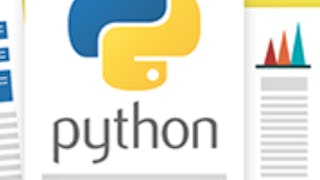This hands-on course equips learners with the practical knowledge and technical skills to develop, implement, and evaluate a sentiment analysis model using Python. Beginning with an introduction to sentiment analysis and its real-world applications, learners will explore and identify appropriate tools including IDEs and essential libraries used in natural language processing (NLP).



Python Case Study - Sentiment Analysis
This course is part of multiple programs.

Instructor: EDUCBA
Access provided by N.S. International
Skills you'll gain
Details to know

Add to your LinkedIn profile
4 assignments
July 2025
See how employees at top companies are mastering in-demand skills

Build your subject-matter expertise
- Learn new concepts from industry experts
- Gain a foundational understanding of a subject or tool
- Develop job-relevant skills with hands-on projects
- Earn a shareable career certificate

There is 1 module in this course
This module introduces learners to the foundational concepts and tools required to build a sentiment analysis application using Python. Starting with a conceptual overview, it guides learners through the selection of the development environment, exploration of essential libraries and algorithms, and finally, a step-by-step breakdown of code implementation and data processing. The module integrates real-world practices, enabling learners to apply machine learning techniques to analyze and classify sentiment in textual data.
What's included
7 videos4 assignments
Earn a career certificate
Add this credential to your LinkedIn profile, resume, or CV. Share it on social media and in your performance review.
Why people choose Coursera for their career




Explore more from Computer Science

Coursera Project Network

University of Michigan



